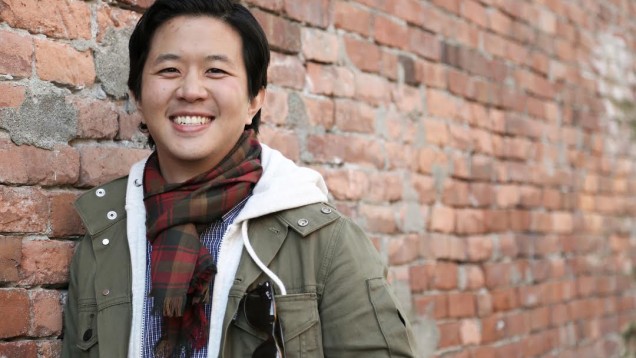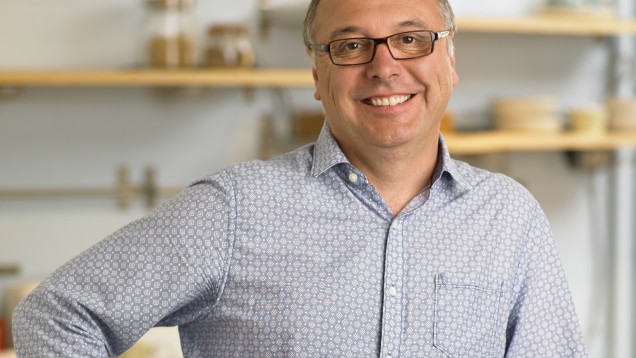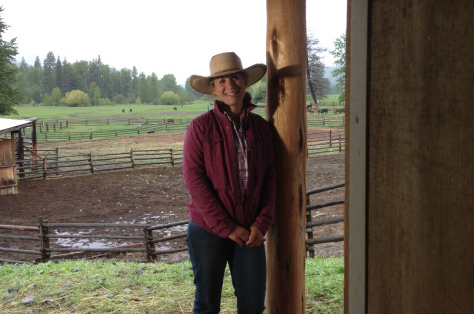
We talk with the hua foundation’s Kevin Huang about the Choi Project
April 14, 2015
The Great Rotisserie Chicken Cookbook: we interview Chef Eric Akis
June 9, 2015
When you visit Erika Strande-Stewart’s blog Life on a BC Cattle Ranch (co-authored with her mentor and fellow rancher Erika Fossen), the first pictures you’ll see are of their cattle grazing high up in the mountains. We talked with this young BC rancher about her family’s cattle ranch, which has been in her family since 1962, and the care that goes into raising these animals on the rolling pastures near Merritt, BC.
We Heart Local: Where do you graze your cattle?
Erika Strande-Stewart: The spring grazing land is typically grass, and the summer range has mountain pine grass, rugged mountains and trees. We also lease some land from our neighbour that we use when cattle start grazing in the spring. This private land is what you’d picture in your head – green fields with fences around them – and then the second week in June we move them out onto Crown Range land – that’s grazing in the mountains. The cattle graze in these mountain passes throughout the summer, until they are rounded up and brought back to the home ranch in October.
WHL: What do you feed your animals? Do you grow your own feed?
ES: We do! One of our summer jobs is haying. We own 800 acres, and 200 acres of which is for crop production. We get two cuts of hay off our fields – we probably could get three, but we leave some standing so the cows have something to graze on in October when they come home. This year we also fed them some barley – it’s another energy source for them when it’s cold and winter, and it really helps the cows’ milk. Cattle forage on their own during the summer on Crown grazing land, so we make sure their nutritional requirements are well taken care of during winter feeding. We move them to different pastures – we’re in charge of making sure we use the whole range and don’t overgraze – but they forage for themselves.
WHL: Why is the environment important to you as a rancher? What do you do to protect our environment in BC?
ES: The environment is so important. I’m the third generation to ranch at our place, and we would not have a future if we didn’t care for the environment. If we overgraze land, that grass is not coming back – weeds will proliferate, and they don’t have nutritional value for cattle – so yes, we have to be very careful. Same with water – the Coldwater River runs through our ranch; we need to manage that properly to provide our cattle and ourselves with a good, clean, sustainable source of drinking water. Everything we do matters, and it’s in our best interests to take care of the environment. And it just makes sense! It’s part of our job description.
WHL: What is a feedlot?
ES: In the fall, when we bring all our cattle back to the home ranch, we sell all of our steer calves and some of our heifer calves, and then they go to a feedlot. A feedlot is a production operation where cattle are fed rations (gradually introducing grain into their diet) so they can build lean muscle and marbling of the meat, bringing them to a healthy finishing weight to produce tasty, wholesome meat for consumers to enjoy. (The feedlot) works with animal nutritionists to develop balanced rations, calculated for optimal weight gain of the calves every day. They’re an amazing industry that I don’t think is given enough credit because people have a negative perception of “penned animals” in large-scale feedlots. The industry is well-regulated to keep the cattle safe, and it’s too bad that people are scared of what they don’t know.
I don’t know if people are familiar with Temple Grandin, but I have a lot of respect for her, and one of the things she says is: “Nature is cruel. We don’t have to be.”
WHL: Where do you sell and how do your market your beef? Can I buy BC beef at the supermarket?
ES: For us, we tend to sell calves the first week in November. We keep about 60 heifers (female calves for breeding) to go back into our cow herd. Calves are typically auctioned to cattle buyers and feedlots where they will go to be “finished” prior to processing. Most cattle from B.C. are processed for meat by federally inspected facilities in Alberta (because we don’t have a federal facility in B.C.), then shipped back for sale in B.C. supermarkets. Look for the Canadian Beef logo in your supermarket to be sure you are supporting local B.C. ranchers. I have a little direct-marketing business and people can also get in touch via our blog to purchase beef from me directly.
It’s a lot of work some days but it is really rewarding. At the end of the day our job is to provide a safe, nutritious protein source for Canadians, and we take a lot of pride in that.
Interested to hear more about BC cattle ranching? Read about life on a BC cattle ranch on Erika’s blog. And if you’re feeling hungry for BC Beef, it’s the perfect time to break out your barbecue and try these Baby Blue Mini Beef Sirloin Burgers.